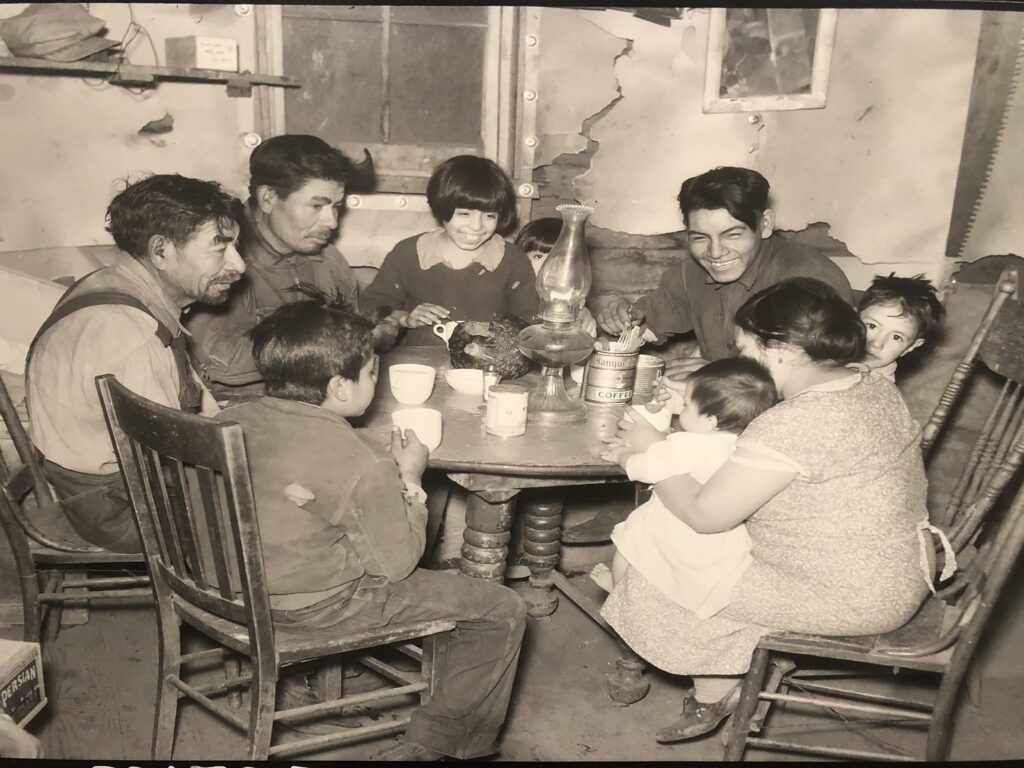
Laughter at the end of a long day.
clay county histories
Markus Krueger | Program Director HCSCC
The Farm Security Administration, or FSA, was a New Deal program created to combat rural poverty during the Great Depression. Part of solving any problem is understanding it, and for that reason the FSA employed photographers to document living and working conditions for America’s Ag workers. FSA photographers gave us some of the most compelling and famous images of the Great Depression, the visual equivalent of Woody Guthrie’s Dust Bowl Ballads and John Steinbeck’s novel The Grapes of Wrath. In the fall of 1937, the FSA sent photographer Russell Lee to Polk County, Minnesota, to document the sugar beet harvest. More than 80 of these photos are now on display at the Hjemkomst Center.
Red River Valley farmers started growing sugar beets in the early 1920s. Local farmers recruited Hispanic American and Mexican agricultural workers in Texas to thin, weed and harvest the beets from about April to November. While many of these migrant families moved on after harvest, some stayed for year-round work, creating Minnesota’s first Hispanic communities. By the time changes in farming practices eliminated the need for migrant labor in the early 2000s, the Red River Valley’s oldest Hispanic families were in their third or fourth generation, graduating from college and getting good jobs. Their roots were deep here.
The exhibit Roots of the Red River Valley: Through the Lens of Russell Lee is a labor of love for Kenneth Mendez of the University of Minnesota Crookston. His father answered an ad to work in Polk County sugar beet fields in 1927, and his family has been here ever since. Ken stumbled upon Lee’s photos on the internet one day. With the help of Megan Beck Peterson and Lauren Wallace, Ken turned the photos into an exhibit for U of M Crookston.
The photos show the process of picking beets in the field, loading and unloading beet trucks, piling the beets at the East Grand Forks plant, and family life inside migrant housing. They will make your back ache just looking at them. Farmer David Kragnes, who helped hang the exhibit at the Hjemkomst Center, explained how to “Top” beets with the special modified machetes. To pick the beet up, stab it with the spike welded to the end. As the photos show, it’s best to hold the beet with your thumb toward the root when slicing off the leafy tops. If you miss, it’s better to lose a pinky than a thumb.
We know life was not always sweet for our ancestors in the sugar industry 84 years ago, but this exhibit about the Great Depression is not depressing. Life was hard indeed, and money was scarce, but you’ll see a lot of smiles in these photos. Kids are goofing off, a factory guy said something funny, proud parents gush over their baby. The workers in these photos, both Hispanic and Anglo, grew up in cultures that valued hard work, and there was certainly enough of that to go around. Russell Lee came to document rural poverty and captured a lot of dignity.

